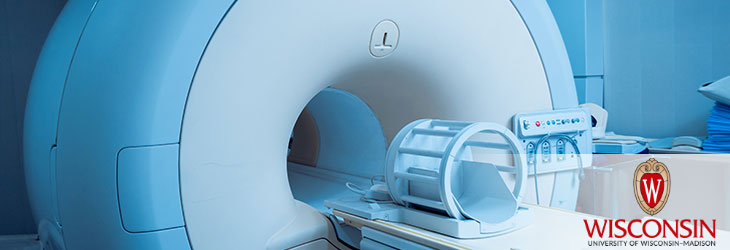Radiation Therapy

Electrode Array for Radiofrequency Tissue Ablation
WARF: P03367US
Inventors: Dieter Haemmerich, David Mahvi, John Webster, David Schutt
The Wisconsin Alumni Research Foundation (WARF) is seeking commercial partners interested in developing a faster method of bipolar RF ablation that uses an electrode array to heat tissue between electrodes.
Overview
The liver is a common site for both primary and metastasizing cancer. Surgical resection, the preferred treatment for liver cancer, is a time consuming procedure during which the surgeon must cut through tissue while avoiding or closing large blood vessels. Blood loss during resection can increase the chance of post-operative complications and decrease patient survival rates.
One method of reducing blood loss is radiofrequency (RF) ablation, which involves passing an electrical current from a probe inserted into the tissue to a ground pad situated on the patient’s skin. The electric current coagulates tissue near the probe with heat, sealing it against blood flow. RF ablation originally involved inserting, removing and reapplying a single mono-polar probe at many locations along a tissue slice, a process that generally took too long for clinical practice.
One method of reducing blood loss is radiofrequency (RF) ablation, which involves passing an electrical current from a probe inserted into the tissue to a ground pad situated on the patient’s skin. The electric current coagulates tissue near the probe with heat, sealing it against blood flow. RF ablation originally involved inserting, removing and reapplying a single mono-polar probe at many locations along a tissue slice, a process that generally took too long for clinical practice.
The Invention
UW-Madison researchers have developed a faster method of bipolar RF ablation that uses an electrode array to heat tissue between electrodes. The electrodes are inserted into the tissue along a resection cut line. To heat the tissue, RF energy is applied in bipolar mode between pairs of probes set in a comb-like configuration. Power is switched between pairs of electrodes in half-second intervals, allowing all probes to heat the tissue, but avoiding increased impedance, which compromises effective heating.
Applications
- Thermal coagulation of tissue during surgery to minimize blood loss
Key Benefits
- More rapidly ablates areas of tissue than previous methods
- Allows a surgeon to thermally coagulate tissue, rather than having to close tissue surgically, saving time and preventing blood loss
- Coagulates vessels up to five mm in diameter; in contrast, mono-polar probes can only coagulate vessels up to three mm
- No ground pads are necessary, eliminating risk of skin burns below the pads.
- May be used on any solid organ, including the liver, kidney, spleen, or brain
- Heat is concentrated between electrodes, allowing ablation of thin slices of tissue.
- Ablation region can have a variety of shapes.
- Electrodes may be inserted separately to mold to the organ’s shape or rapidly inserted in unison.
- Feedback control and localized application of power result in uniform ablation despite varying tissue characteristics.
Additional Information
Related Intellectual Property
For current licensing status, please contact Jeanine Burmania at [javascript protected email address] or 608-960-9846